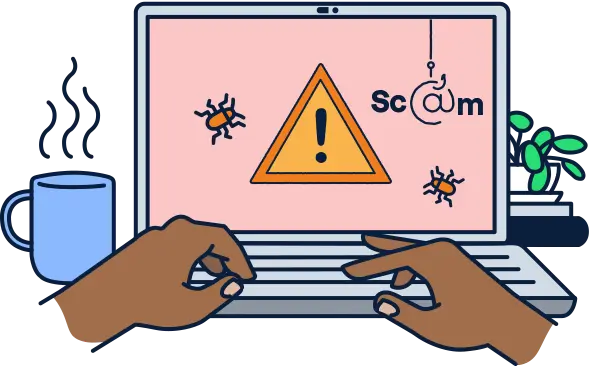
How To Report A Scam / Fake Website
Detecting fake websites is crucial for safeguarding yourself and others from online scams and fraud. As the internet continues to play a central role in our lives, fraudulent actors create deceptive websites to trick users into divulging sensitive information or engaging in malicious activities. This guide outlines steps for detecting and reporting fake websites, offering insights into recognizing red flags and utilizing various reporting mechanisms to combat cybercrime effectively. By staying informed and proactive, individuals can contribute to a safer online environment and protect themselves from falling victim to deceptive online practices.
Reporting a scam or a fake website is important to help protect others and to potentially take action against those responsible.
Here are steps you can take to report a scam or fake website:
- Contact Local Authorities: If you suspect you’ve encountered a scam, reach out to your local law enforcement or cybercrime unit. Provide comprehensive details, including the fake website’s URL, any communication you’ve had, and other relevant information.
- Online Reporting Platforms: Utilize online reporting platforms to document the scam:
- Internet Crime Complaint Center (IC3): Submit a detailed complaint about the incident.
- Federal Trade Commission (FTC): Lodge a complaint with the FTC, providing all necessary details.
- Anti-Phishing Organizations: Report phishing incidents to organizations dedicated to combating online fraud, such as the Anti-Phishing Working Group (APWG). Your input can contribute to their efforts in identifying and preventing scams.
- Web Browser Reporting: Take advantage of browser features for reporting phishing or fraudulent websites:
- Google Chrome: Use the “Report Phishing” option available in the browser’s settings.
- Report to Hosting Providers: Identify the hosting provider of the fake website and report the fraudulent activity to them. Many hosting providers have abuse or security departments that can take swift action, such as suspending the website.
- Cybersecurity Companies’ Tools: Explore online security tools and platforms offered by cybersecurity companies to report suspicious websites. Contributing through these channels strengthens the collective effort against online scams.
Remember to avoid further interaction with the scam website and refrain from providing personal or financial information. Your reports play a pivotal role in enabling authorities and organizations to take necessary actions, leading to the shutdown of fraudulent websites and the prevention of further scams.
In conclusion, safeguarding oneself from fake and scam websites requires a proactive and informed approach. As online threats continue to evolve, prioritizing digital safety becomes paramount. To enhance your protection:
- Stay Informed:
- Regularly educate yourself about common tactics employed by scammers to create fake websites.
- Stay updated on the latest cybersecurity trends and emerging threats.
- Verify Website Authenticity:
- Always scrutinize website URLs for legitimacy before entering personal or financial information.
- Use secure and updated web browsers that provide warnings for potential phishing sites.
- Employ Security Software:
- Install reputable antivirus and anti-malware software to detect and prevent access to malicious websites.
- Enable Two-Factor Authentication (2FA):
- Enhance your account security by enabling 2FA whenever possible.
- Practice Secure Browsing:
- Be cautious when clicking on links or downloading files from unfamiliar sources.
- Ensure the websites you visit use secure connections (https://).
- Report Suspicious Activity:
- Actively participate in reporting scams and fake websites to relevant authorities and online platforms.
- Share Knowledge:
- Spread awareness among friends, family, and peers about potential online threats.
- Foster a community where individuals collectively contribute to a safer online environment.
By adopting these practices, you contribute not only to your personal safety but also to the broader effort of creating a secure digital landscape. Remember, vigilance is the cornerstone of online safety, and your proactive approach can make a significant impact in thwarting the efforts of cybercriminals. Stay informed, stay secure, and encourage others to do the same for a safer online experience.